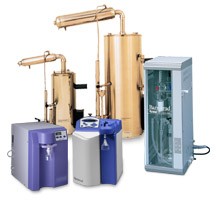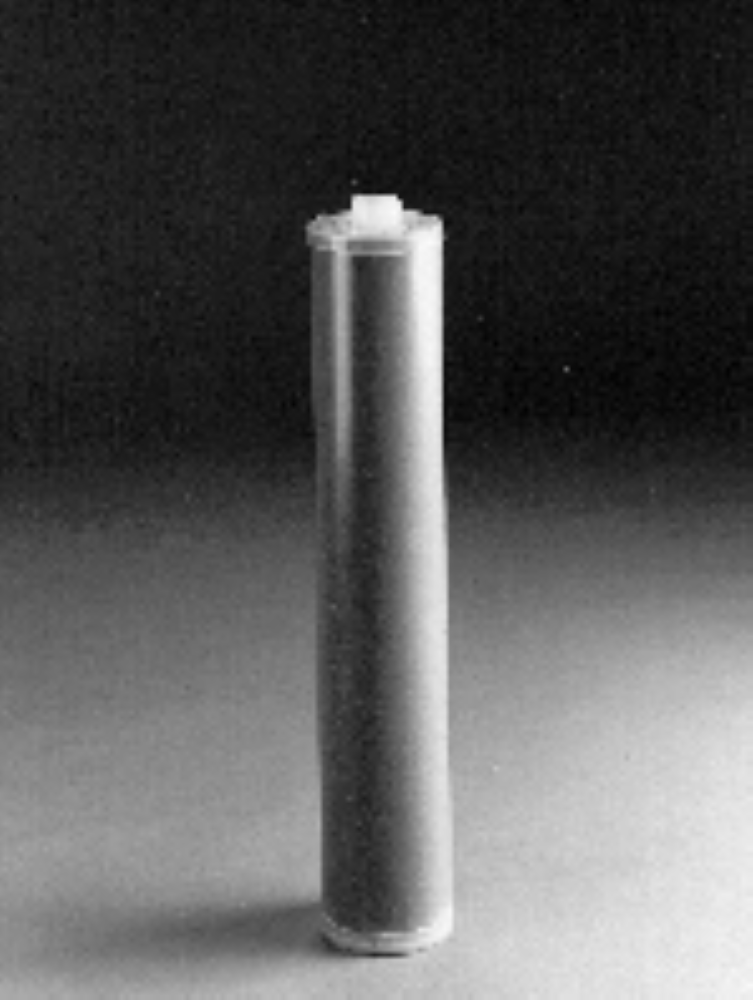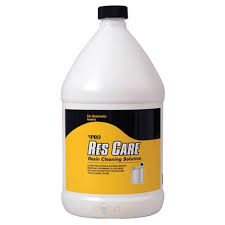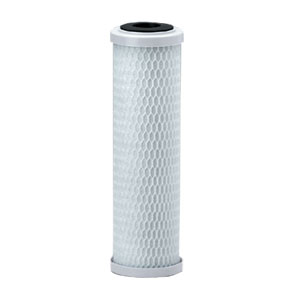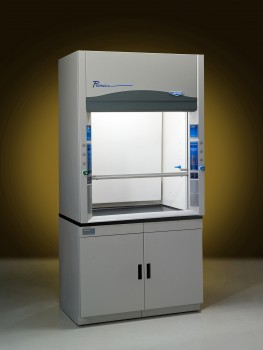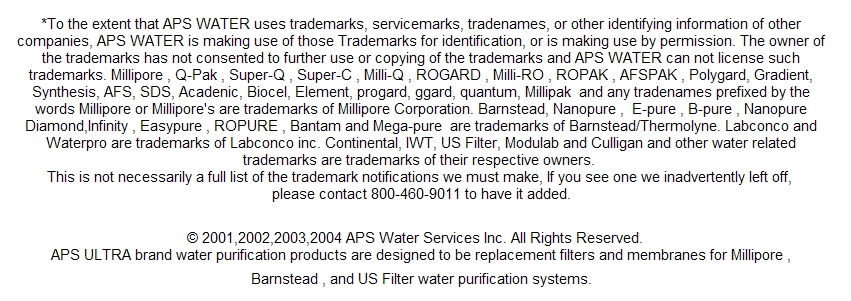Chlorination Chlorine and Sodium Hypochlorite
What impurities will chlorination remove?
Chlorination is a water treatment that destroys disease-causing bacteria, nuisance bacteria, parasites and other organisms. Chlorination also removes soluble iron, manganese and hydrogen sulfide from water.
Disease-causing bacteria can infect humans and animals in several ways. Fecal waste from an infected host frequently carries organisms which cause diseases such as typhoid fever, paratyphoid fever, bacillary dysentary, infectious hepatitis and others. Disease-causing organisms are transmitted from host to host in many ways including through a contaminated water supply. Human and/or livestock populations concentrated together with improperly located or constructed wells may result in contamination of water supplies by sewage or fecal wastes.
There is no substitute for a safe and sanitary water supply. If your water supply becomes contaminated, elimination of the source of contamination is the most permanent solution. Continuous chlorination to kill disease-causing bacteria in a contaminated water source should be a temporary measure used only until you can develop a new, sanitary water supply.
How to test your water
Most water testing for chlorination purposes is done to detect the presence of coliform bacteria. Coliform bacteria testing is used as an indicator of the possible presence of disease-causing bacteria. Tests for the presence of coliform bacteria may be made by the most probable number (MPN) method or the membrane filter (MF) method. If no coliform bacteria are detected in a test, the MPN will be reported as less than 2.2 and the MF as zero. If any bacteria are present, the number will be stated.
If bacteria are present, you should thoroughly shock chlorinate the water supply and system. After chlorinating you should wait 2 to 7 days after all chlorine has been removed from the system and then collect a sample for retesting. If this retest does not detect the presence of coliform bacteria it is likely that the bacteria are not entering on a continuous basis. However, some authorities suggest that at least 3 consecutive tests spaced 3 to 6 months apart should report no bacteria presence before resuming normal testing intervals. If repeated tests show the presence of bacteria, you may have a continuous source of contamination.
Detergents, nitrates and coliform bacteria are all indicators of well contamination. None of these indicators are necessarily harmful but they do suggest that disease may occur if con-ditions are favorable. If a test indicates that your water is contaminated you should locate the source of pollution and eliminate it from your water supply.
What are the advantages of chlorination?
Controls Disease-Causing Bacteria: Disease-causing bacteria may enter your well during construction, repair, flooding or as a result of improper construction. Proper chlorination will kill these bacteria. If disease-causing bacteria enter your water supply on a continuous basis, you must eliminate the source or construct a new water supply.
Controls Nuisance Organisms
Chlorine treatment will control nuisance organisms such as iron, slime and sulfate-reducing bacteria. Iron bacteria feed on the iron in the water. They may appear as a slimy, dark-red mass in the toilet tank but microscopic examination is needed to confirm their presence. Iron bacteria colonies may break loose from the inside of pipes and flow through faucets to cause stains in laundry, plumbing fixtures, etc. A thorough shock chlorination of the well and water system may destroy all iron bacteria colonies. However, iron bacteria that have penetrated the water-bearing formation will be difficult to eliminate and will likely re-infest the system. In this situation you will need to repeat chlorination treatment periodically. Other nuisance organisms include sulfate-reducing bacteria which produce a rotten-egg odor. Chlorination will kill or control these bacteria. Nuisance bacteria do not cause disease.
Mineral Removal: You can remove large amounts of iron from water by adding chlorine to oxidize the clear soluble iron into the filterable reddish insoluble form. Chlorine helps remove manganese and hydrogen sulfide in the same way.
For a complete discussion of iron and manganese removal see publication "Treatment Systems for Household Water Supplies -- Iron and Manganese Removal."
What are the disadvantages of chlorination?
No Nitrate Removal
Chlorine will not remove nitrates from water. The claims of some water treatment firms imply that nitrates can be removed by chlorination. This is not true. Adding chlorine may prevent nitrates from being reduced to the toxic nitrite form; however, nitrates are not removed from water by chlorination.
Causes Smell and Bad Taste
Chlorine in water is not poisonous to humans or animals. However, if the concentration is great enough the water will taste bad so consumption may be reduced. Some people object to the smell and/or taste of very small amounts of chlorine.
In those cases an activated carbon or charcoal filter may be used to remove the chlorine from the drinking water.
Trihalomethanes (THMs) are organic chemicals that may form when chlorine is used to treat water supplies that contain humic compounds. Humic compounds form as a part of the decomposition of organic materials such as leaves, grass, wood or animal wastes. Because THMs are very seldom associated with groundwater, they are primarily a concern where surface water supplies are used.
Lifetime consumption of water supplies with THMs at a level greater than 0.10 milligrams per liter is considered by the Environmental Protection Agency to be a potential cause of cancer. THMs can be removed from drinking water through use of an activated carbon filter.
The chlorination process
To chlorinate a water supply properly it is necessary to understand chlorine demand, free available chlorine residual and contact time.
Chlorine demand is the amount of chlorine required to kill bacteria, oxidize iron or other elements in the water, and oxidize any organic matter that may be present. There is no easy way to determine the amount of chlorine required -- chlorine is added until the chlorine odor persists.
Free available chlorine residual is the amount of chlorine remaining in the water after the chlorine demand has been met. If the chlorine demand is greater than the amount of chlorine introduced, there will be no free available chlorine residual. Unless a chlorine residual is present, adequate amounts of chlorine have not been added to the water.
You can determine free available chlorine residual by using a test kit which sells for $15 to $50. Swimming pool owners use these kits to test the chlorine level of their pool water. Kits are available from local plumbing or water supply equipment dealers.
Contact time is the amount of time that the chlorine is present in the water. The combination of chlorine residual and contact time determines the effectiveness of the chlorination treatment. The bacterial "kill factor" is defined as the product of free available chlorine residual and contact time. Thus the greater the chlorine residual the shorter the required contact time for bacterial kill.
Neither shock nor continuous chlorination should be used as a substitute for a safe water supply. Wells should be located and constructed in accordance with existing state well codes and accepted sanitary standards. The water system must also be properly constructed to prevent bacterial contamination between the well and the point of use.
Chlorination methods
Two methods for chlorinating water are:
Shock chlorination required for new wells or after well repairs (your well driller or repair person should perform this chlorination), recommended to treat non-recurring bacterial contamination.
Continuous chlorination used to treat recurring bacterial contamination problems. This process is similar to that used in municipal water supplies as a preventive measure.
Shock chlorination procedures
For shock chlorination, an initial chlorine concentration of 50 to 100 parts per million (ppm) with a contact time of at least 6 hours is recommended. To obtain a concentration of 100 ppm you need to know (or estimate) the diameter of your well and the depth of water in the well. Note: Do not use the total depth of the well. The depth of water is the distance from the water surface to the bottom of the well. Your well driller may have this information or you can determine it yourself by lowering a weighted string to the bottom of the well. Table 1 shows the amounts of chlorine bleach to add for an initial concentration of about 100 ppm.
Table 1. Chlorine Bleach Additive Quantities
-------------------------------------------------
Well Diameter Depth of Water in Well (feet)
(inches) less than 50 100 150 200
-------------------------------------------------
Quarts of Laundry Bleach
2 1/4 1/4 1/4 1/4
4 1/4 1/2 3/4 1
6 1/2 1 1.5 2
8 1 2 2 3
10 1.5 3 3 3
12 2 3 4 4
-------------------------------------------------
Any type of laundry bleach containing 5.25% hypochlorite solution will work. Because bleach is corrosive to metals it should be diluted in the ratio of 12 parts of water to 1 part bleach prior to adding to the well water. These corrosive properties also mean that care should be taken in handling to avoid contact with skin and especially eyes. Rubber gloves and goggles are recommended when handling chlorine solutions. If you are exposed, flush repeatedly with clean water. This should be done immediately after exposure.
Follow the steps below to properly shock chlorinate your well:
Step 1. Determine the amount of bleach and dilution water to use (see Table 1). For example if you have a 4 inch diameter well with 40 feet of water, Table 1 recommends using 1/4 quart of bleach. To dilute, use 3 quarts of water (12 times 1/4 quart).
Step 2. Remove the cap from your well. There are many types of well caps. If you have questions or need instructions to remove the cap, contact your well driller.
Step 3. Pour the mixture of chlorine and water down the well. Try to coat the casing (sides of the well) as you pour. To get good distribution in the well, attach a hose to a nearby hydrant or faucet and put the discharge end of the hose in the well. Then start the pump to recirculate chlorinated water back into the well. The recirculating water should have a strong odor of chlorine if the chlorine demand has been met.
Step 4. Run water through the service lines in the house until you detect the odor of chlorine at each tap. Make sure you run the chlorinated water through every line in the system. You may also want to flush toilets. Note: If you have an activated carbon filter in the system, temporarily remove the cartridge or bypass the filter completely.
Step 5. Let the chlorinated water stand in the system for at least 6 hours, preferably 8 to 12 hours.
Step 6. Flush out the system beginning with the well. Use a hose connected to an outside hydrant and discharge the water to an appropriate waste system. Note: This large volume of chlorinated water should not be put into a septic system or onto delicate plants or lawns. After water from the well is free from chlorine odor, flush the rest of the piping system. Draining this volume of water into your septic system should be acceptable.
Depending on the age and condition of your well, you may want to shock chlorinate the well up to 10 times before abandoning the well. If you must use the present contaminated water supply until the new supply can be developed, be sure to follow a process of continuous chlorination.
Single-pipe Packer Jet Water Systems
If your well has a single-pipe packer jet water system you can disinfect it thoroughly only by removing the drop pipe from the well. Add the chlorine solution into the jet pump by disconnecting the tube at the air charging device and placing it in the chlorine solution (see Figure 1). The solution will be drawn through the pump, the jet fittings, the upper portion of the well, the drop pipe and the distribution system.
Because there is a foot valve at the bottom of the drop pipe, very little, if any, chlorine solution can enter the well below the packer leathers. Therefore you must pull the drop pipe to disinfect the well thoroughly. With a packer jet water pump, chlorinate the water system before you remove the jet fitting from the well.
Chlorination and Water Heaters
If your hot water smells worse than the cold, you may want to add a small amount of bleach directly to the water heater or drain the water heater before chlorinating. Turn off the water heater first. Chlorine is not as effective in hot water. Always turn off the heater before draining the tank.
Continuous chlorination procedures
Continuous chlorination is a necessity for surface water supplies such as ponds, springs, lakes or cisterns. You can use chemical feed pumps to inject chlorine into your system. Wire the feed pump to the water pump pressure switch so that the pumps operate simultaneously. Other proportioning devices are available to feed chemicals into the water. If you are chlorinating to control disease-causing bacteria, you will need an alarm device that indicates when the chlorine solution supply needs replenishing.
Because effective organism kill is a function of contact time, the chlorine solution should be injected into the water as close to the source as possible. Adequate contact time for disease-causing bacterial kill depends upon free chlorine residual, water temperature, water pH (acidity), and the specific organism. Continuous chlorination typically uses a chlorine residual of 3 to 5 ppm. This level is considerably higher than that of municipalities (0.2 to 0.5 ppm) where the large distribution system provides a long contact time. This level of residual chlorine may cause a taste and/or odor that is objectionable.
At the 3 to 5 ppm level, adequate contact time for surface water supplies is in the range of 2 to 7 minutes to develop the proper bacterial kill factor. For well water, a contact time of 2 to 3 minutes is normally sufficient. In any case where disease-causing bacteria are involved, tests should be conducted after installation and continued on a regular basis to insure a safe water supply.
Research has shown that there is no dependable contact time calculation that can be used to test the pressure tank of the water system. The piping in home water systems usually provides little contact time. The time between the pump and the nearest faucet is usually one minute or less. A coil of plastic pipe can be used to increase contact time. The length of pipe required depends on the pipe diameter and the flow rate. For example, to achieve a 4-minute contact time with a 10 gallon per minute flow rate, you would need 128 feet of 3 inch nominal diameter pipe or 480 feet of 1.5 inch nominal diameter pipe. Your pipe supplier should be able to assist you in selecting the proper size and length for your required contact time and flow rate.
Continuous chlorination is expensive and requires frequent and intelligent management. It should not be considered for disease-causing bacteria control until other alternatives have been fully explored.
Summary
Shock chlorination and/or continuous chlorination are useful and effective methods to destroy disease-causing bacteria and other nuisance organisms in water supplies. Chlorination is not a substitute for a safe pure water supply and should be used only when other options have been thoroughly investigated.
--------------------------------------------------------------------------------
Further Information
For further information contact your local county extension office or state health department.
References
MWPS-14Private Water Systems Handbook, Midwest Plan Service
AG-FO-1319Chlorination of Private Water Supplies, University of Minnesota Agricultural Extension Service
NRAES-47Private Drinking Water Supplies: Quality, Testing, and Options for Problem Waters, Northeast Regional Agricultural Engineering Service, Cooperative Extension
Funding for this publication was by the U.S. Department of Agriculture, Extension Service, under project number 90-EWQI-19252.
AE-1046, June 1992
http://www.ag.ndsu.edu/pubs/h2oqual/watsys/ae1046w.htm
|

Images are representative of the products. Images may or may not be of the actual product. If it is important e-mail us for an actual image if available.
* Flat Rate UPS shipping when able to ship via UPS and is in the USA excluding Hawaii and Alaska.
Larger Items may not be able to ship via UPS, in that case freight charges will be quoted seperately.
International shipping will be quoted after the order is placed. You will have the opportunity to cancel before we finalize your order.
Terms and conditions
Credit Application
Privacy
Policy
Google Apps
List All Products
|
